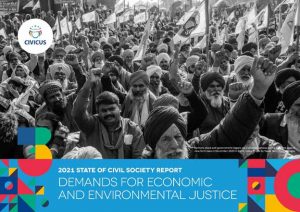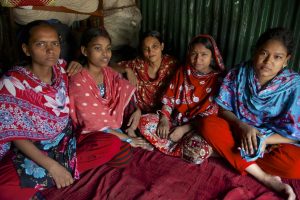Unarguably, Mahatma Gandhi remembered as the “Father of the Nation” took many democratic steps to reach out to the Indian masses and identified himself with them. One of those steps was his decision to don dhoti, a traditional men’s garment worn in India. In India today several Indian politicians can be seen wearing dhoti in different styles. The style of their wearing dhoti identifies them with the region they hail from. Though their dhoti adds a regional stamp to
their political identity, it is difficult to link it with today’s democratic spirit. The explanation is simple. The dhoti can no longer be described as a common Indian citizen’s dress. The majority of men in cities as well as villages are seen in shirts and trousers. Even the ladies across the country now prefer wearing salwar-kameez and are seen in sarees, largely on special occasions. Certainly, Indian politicians have the right to opt for anything they
feel comfortable in. But it would be erroneous to view this decision as a part of their democratic appeal to reach out to the Indian voters. Rather, the style of each reflects his/her political image he or she is trying to promote. This stands out in different ways that the dhoti is worn by P. Chidambarm, A.K. Antony, Mulayam Singh and other leaders. Similarly, the different ways in which sarees are worn by Sonia Gandhi, Jayalalitha and Mamata Bannerjee cannot be ignored. The style of their wearing sarees has definitely added to their political identities. The dressing styles reflect their own political identity and not that of common Indian citizens. The use of a dress as a political tool in today’s India is very much off the democratic path, which Gandhi used it for. And this is just a symbolic indicator of the importance accorded to common Indians in the country’s politics. Despite various leaders claiming to be people’s voice, leader of the common Indians and other such rhetoric, the divide between their identity and that of Indians at grassroots cannot be sidelined. Indeed, it is an irony that on one hand, the strides in communication technology has made it possible for Indian leaders to reach out almost continuously to Indian citizens. This is what majority of Indian leaders and parties are engaged in at present. Through recorded messages voiced through radios, mobiles and other such means they are continuously reaching out to Indians. They are conveying their messages and making their own voices heard. The same importance is not accorded to listening to the voices of India’s masses. Howsoever white, clean and or starched the leaders’ dress may appear to be, the same cannot be said about political standards maintained and promoted by most. The stings and scams that have caught several politicians on the wrong foot is just a minor indicator of their own political record being hardly as white as their dress.
In reality, there is a major communication gap between most Indian leaders and people at grass-roots. The importance given by Gandhi to bridging this gap has ceased to carry much relevance for most Indian politicians. There is a major difference between rhetoric indulged in by politicians and their practicing the same. During their electoral campaign, politicians have started giving considerable importance to dress of people seen at their political
functions. For instance, the unwritten rule being practiced by most is that Muslim men must wear their attire with their skull caps and the women must put on the long, black cloak called the burqa. The primary purpose of this drive is to display the “support” of Muslims for these leaders. Here, the democratic gap between display of these Muslims’ presence and their being viewed as representatives of Indian Muslims cannot be missed. The last point can be expanded to reflect on democratic relevance of crowd witnessed at political functions. Undeniably, displaying large gatherings at their rallies and other such programs is an important part of electoral campaigns. But to what extent can crowds actually add to democratic credibility of such leaders. It may be recalled, sometime back, Anna Hazare dominated Indian politics and media. He apparently derived his “democratic” strength
from the presence of huge gatherings of common Indians at his functions. In certain areas, Hazare began to be hailed as the second Gandhi. Now, Hazare does not seem to enjoy the same political support. His ride atop the political waves was apparently a temporary phase. If Hazare’s political strength was really based on democratic support of common Indians, most probably his name would also have been used today to attract crowds. But he is no longer in the political picture. And this reaffirms the point made earlier about their being a major communication gap between Indian leaders and people at the grassroots. The political image displayed by most leaders through their dress, rhetoric, crowd at their functions and other means does not establish
their democratic credibility among common Indians. It is easy for practically any politician in the fray to claim himself to be leader of the people. He may also ride atop political and media waves for a while primarily on basis of what he claims. But if his claims do not win him support of people, he is likely to fail democratically. In today’s Indian politics, there is a major gap between politicians projecting themselves as people’s leader and their
actually being recognized as such by the majority. nilofarsuhrawardy@hotmail.com – Eurasia Review,By Nilofar Suhrawardy




